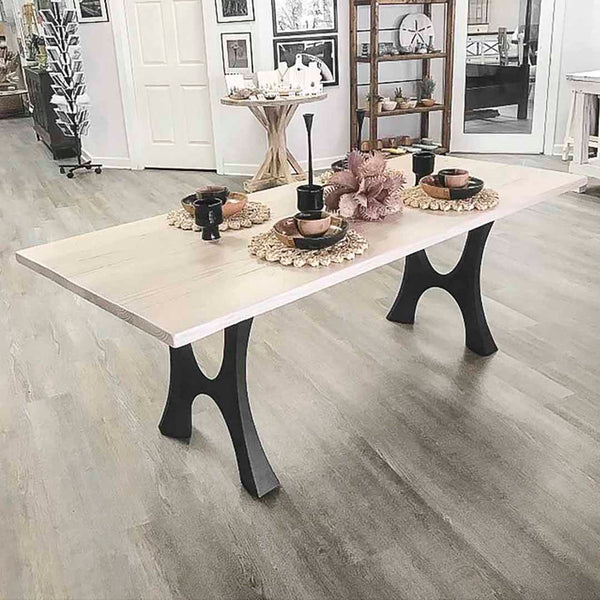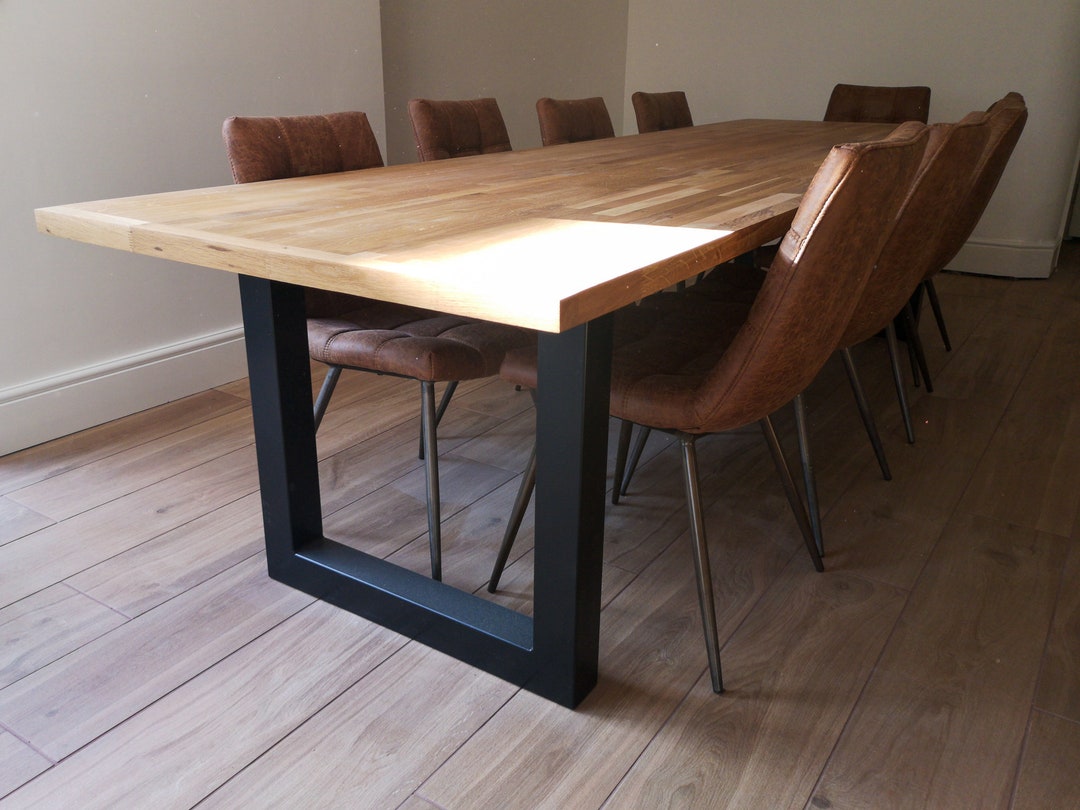The Impact of Dining Room Table Legs on Your Table's Overall Design
The Impact of Dining Room Table Legs on Your Table's Overall Design
Blog Article
From Traditional to Modern: Discover the Perfect Dining-room Table Legs for Your Design
The choice of dining-room table legs plays a pivotal duty in specifying the general personality of your space, bridging the gap in between typical craftsmanship and modern aesthetic appeals. While classic designs such as cabriole and turned legs evoke a sense of timeless refinement, contemporary styles like barrette and geometric choices offer a possibility for striking aesthetic interest. Assessing the right balance between these designs calls for a nuanced understanding of your existing design and individual preference. As you take into consideration these components, the inquiry stays: just how can you flawlessly integrate these diverse leg styles to produce an unified eating experience?
Comprehending Table Leg Styles
The variety of eating space table leg styles can significantly affect both the aesthetic appeals and capability of the room. Each leg style contributes distinct aesthetic elements and sensible features, accommodating diverse design preferences and use needs. Understanding these designs is essential for selecting the right dining table that lines up with your total interior style vision.
For example, tapered legs supply a tidy, traditional appearance that can boost a room's style, while stand bases supply security and optimize legroom, making them optimal for smaller rooms. Hairpin legs, a characteristic of mid-century modern-day style, present an industrial panache, enabling a ventilated, open feeling. Trestle legs evoke rustic appeal, giving durable support and a sense of timelessness.
In addition, the selection of products plays a significant function. Wooden legs can bring warmth and texture, whereas metal alternatives commonly share a streamlined, modern vibe. Inevitably, comprehending table leg designs is essential for creating a cohesive dining location that shows individual design while making certain usefulness and comfort. By attentively thinking about these aspects, you can boost both the functional and aesthetic charm of your dining room.
Conventional Table Leg Options
When picking dining-room table legs, typical options commonly embody ageless elegance and workmanship. These styles show an abundant heritage and a commitment to top quality, making them optimal for those that appreciate timeless appearances.
One of one of the most legendary traditional leg designs is the cabriole leg, defined by its graceful bent shape. This design commonly features decorative carvings and is most generally discovered in Queen Anne and Chippendale furnishings. One more prominent option is the transformed leg, which boasts a series of smooth, rounded shapes that supply a classic appearance while preserving security.
In addition, the straight leg, while basic, provides a unadorned and tough structure that can mix perfectly with a selection of tabletop styles. For those drawn to ornate detailing, claw-and-ball feet legs stimulate a sense of majesty and can serve as a sensational prime focus in any eating area.
Finally, stand bases, although not strictly legs, provide a different typical option that permits ample legroom and can be beautifully carved. Each of these conventional leg styles adds to the overall atmosphere of a dining-room, marrying function with aesthetic appeal.

Modern Table Leg Layouts
Modern table leg designs provide a diverse series of designs that stress tidy lines and innovative materials. recommended you read These styles often focus on performance while serving as striking centerpieces within an eating space. Minimalist aesthetics prevail, with legs crafted from products such as metal, glass, and engineered wood, which contribute to a modern and ventilated feeling.
One prominent style is the hairpin leg, defined by its slim, tapered structure that gives stability without frustrating the table top (dining room table legs). This design is frequently discovered in mid-century modern-day furniture and can effortlessly match numerous eating table shapes. One more pattern is making use of geometric shapes, where legs may take on angular or asymmetrical kinds, adding visual rate of interest and a touch of virtuosity

Blending Styles for Distinct Areas
Commonly, home owners look for to develop one-of-a-kind dining spaces that reflect their personal style by mixing different style aspects. This strategy enables the incorporation of diverse aesthetics, leading to a harmonious yet distinctive atmosphere. For instance, matching a rustic wooden table with sleek, modern steel legs can produce an eye-catching comparison that boosts the space's total appeal.
Furthermore, incorporating vintage table legs with modern tabletops can stimulate a feeling of background while maintaining a contemporary perceptiveness. Such combinations not just showcase specific preference but likewise urge creative thinking, enabling house owners to curate a space that really feels both individual and inviting.
Shade plays an essential function in this blending process; selecting table legs that match or comparison with the existing color pattern can boost visual interest. For instance, whitewashed legs can soften the daring of a dark table surface, creating a well balanced visual.
Tips for Picking the Right Legs
Choosing the right table legs is important for achieving both capability and aesthetic appeal in your eating space. Begin by considering the general style of your visit their website area. Traditional settings benefit from legs that feature detailed carvings or turned styles, while contemporary rooms may ask for sleek, minimalist styles.
Following, evaluate the elevation and security of the legs. dining room table legs. Basic table range between 28 to 30 inches in height, so guarantee the legs match this dimension for convenience. Furthermore, durable materials, such as hardwood or steel, can boost security and durability
Assess the leg form also-- options consist of directly, tapered, or pedestal designs. Straight legs supply a traditional appearance, while conical legs can include a touch of style. Pedestal bases give enough legroom and site here are suitable for smaller rooms.
Conclusion
In recap, choosing the suitable dining area table legs requires careful factor to consider of both contemporary and conventional styles. By balancing leg design, elevation, and product with the overall décor, a cohesive and inviting environment can be achieved.
The range of dining room table leg designs can substantially influence both the visual appeals and functionality of the room. Inevitably, recognizing table leg styles is necessary for creating a natural dining location that shows individual style while making certain practicality and convenience.One of the most legendary typical leg designs is the cabriole leg, characterized by its elegant bent shape. Straight legs provide a timeless appearance, while conical legs can include a touch of beauty.In recap, selecting the perfect eating room table legs calls for mindful consideration of both modern-day and standard styles.
Report this page